Shipping container skyscraper: A creative housing solution to help the urban poor
The Shipping container skyscraper – Steel city project consists of 2 towers made of used shipping container modules. Seeking to explore and investigate the possibility of a temporary adequate housing solution for dwellers of the densely populated Dharavi Slum in Mumbai, India.
Cities are facing unprecedented demographic, environmental, economic, social and spatial challenges. There has been a phenomenal shift towards urbanization, with 6 out of every 10 people in the world expected to reside in urban areas by 2030. Over 90 percent of this growth will take place in Africa, Asia, Latin America, and the Caribbean.
In the absence of effective urban planning, the consequences of this rapid urbanization will be dramatic. In many places around the world, the effects can already be felt: lack of proper housing and growth of slums, inadequate and outdated infrastructure – be it roads, public transport, water, sanitation, or electricity – escalating poverty and unemployment, safety and crime problems, pollution and health issues, as well as poorly managed natural or man-made disasters and other catastrophes due to the effects of climate change.
See more images of shipping container skyscraper in India:
Recycling used shipping container modules which are cheap and fairly available in a port city like Mumbai, gives us the chance to revitalize such a socially deprived area and contribute to a housing solution, providing a visual focal point, reinforcing and enhancing the presentation of an urban housing.
The contribution of this project to the sense of place and community at the chosen location, encourage its use, and has a direct relationship with the idea of such a vertical development, maximizing the new development potential with attention to sustainability and ecology.
CONCEPT
The irregular shape of the site gives us total freedom of design and expression when to provide better living conditions for the inhabitants of Dharavi.
We pushed the whole site to a height of 100 meters to play with the maximum volume. Two towers were chosen to be designed after analyzing the shape of the site, the one told us how to split the volume and where we should put them both. To maximize the views in any direction we decided to use a cylindrical shape for the base of the towers, having an advantage of the great far away views around. Taking the mass that doesn’t belong to the cylinders, we overlapped them to grow up the tower’s height.
The tower’ shape is continuing changing in height, nourished by surroundings’ characteristics and future streets alignments, and giving it the geometry optimization with the one we were designing the container’s positions.
The skyline of Mumbai will be severely modified after receiving the “Containscraper” on its dense urban grid. With a maximum height of 400 meters for the tallest tower and 200 for the small one, both together will be the new challenge of height to beat in the city. The position of both towers is the answer to the irregular shape of the site, giving to this area the opportunity of being the new landmark of the city with a striking new visual presence.
CONTAINERS
After analyzing as ships and ports of loading and unloading of containers store these elements, we realized that the classical and standard container’s storage position allowed us to have only one direction of views, consequently the gap for opening windows is coming from the shortest side of the container.
By rotating 90 degrees the position of the containers, we got more façade surface coming from the longest side of them, and greater possibilities for opening windows, although still only one direction of views.
Changing the position of the containers by following a cylindrical shape, we obtained multiple views around the site. Alternating them around the cylinder, we made the wind flow through the containers, helping them to remove and decrease the amount of heat.
With our proposal, under the parameters of a circular floor plan on the bottom of the tower, we emphasize the old method of circular positions for self-defense, allowing its inhabitants to feel the security that a building of these characteristics allows.
The core of both towers is also made with containers in a vertical position, allowing us to house every elevator unit in one of each of the containers in an upright position.
INTERIOR
The position of the “boxes” containing a couple of containers seems to be random, but it is not. It follows a programmed mathematical pattern according to the characteristics of the environment, to provide the maximum flexibility to distribute the units in height. To provide a greater randomization to these positions, the modules of water tanks and empty structures alternate to ensure a regular arrangement in height, and that all users enjoy the vertical gardens, and all dwellings may have availability of smooth water distribution.
The detailed 3D drawing of the minimum container unit shows how we distribute the services facilities about clean water, gray water, and black water, providing each unit with a recirculation reuse water system.
PUBLIC AREAS
The distribution in height of vertical gardens, together with the separation side by side of every container unit, helps the whole system to remove and decrease the heat dissipation produced by the high temperatures during summer in Mumbai, and the transmission of heat from the metal facade of each container.
On those empty structures alternated in height, we projected the public spaces and useful areas for the community, having in consideration a lot of inhabitants that a building of these characteristics must integrate. Vertical gardens, medical services, small markets, schools for children and for adults, entertainment areas, allowing those people of enjoying the great views in height and the fresh air, escaping from the polluted lower areas of the slum.
We arranged a helicoidally ramp around the vertical core of elevators to provide the inhabitants of an alternative channel of communication in height between the different floors, and thus to promote the communal lifestyle and the exchange of goods between different areas of the skyscraper.
Having a look at the existing containers in the market, we can clearly see that the range of colors that they hold is varied, and we were working and trying different options and concepts, playing with the original color of each container. In the end, we decided that the coloring of facades must respond to the heating rate of each side, depending on their orientation, and after analyzed the solar incidence of the site. Therefore, we gave the warmer colors to the south side, and colder colors to the north side, reproducing colors of transition between each of them, along with the east and west sides of the towers.
Mumbai shipping container skyscraper Numbers:
PROGRAM
- Site Use – Site Area (m²): 9,259.00 m2
- Building Area (m²): Tower 1: 78,383.00 m2 / Tower 2: 26,693.00 m2
- Gross Floor Area (m²): 120,000.00 m2
- Building Coverage Ratio (%): 55.73%
- Stories above Ground: Tower 1: 139 Floors / Tower 2: 78 Floors
- Stories below Ground: 5 Floors
- Structure: Steel and concrete
- Maximum Height (m²): Tower 1: 400 m. / Tower 2: 200 m.
- Landscape Area: 4,098.25 m2
- Exterior Finish: Painted steel
TOWER 1
- 400 m
- 139 Floors
- 16 Structure modules
- 2,344 Containers 45’
- 21 Water Tank Containers 45’
- 402 Empty Structures 45’
- Elevators: 644 Containers 40’
- 78,383 m2 Residential
TOWER 2
- 200 m
- 78 Floors
- 9 Structure modules
- 898 Containers 40‘
- 16 Water Tank Containers 20’
- 178 Empty Structures 40’
- Elevators: 96 Containers 40’
- 26,693 m2 Residential
TOTAL
- 2,344 Containers 45’
- 402 Empty Structures 45’
- 21 Water Tank Containers 45’
- 1,638 Containers 40’
- 178 Empty Structures 40’
- 16 Water Tank Containers 20’
- 105,076 m2 Residential
- 1,400 Families Approx.
5,000 Inhabitants Approx.
Thanks for visiting! If you like the shipping container skyscraper project, You can share it with your friends! Also follow us for more creative skyscraper designs from around the world!.
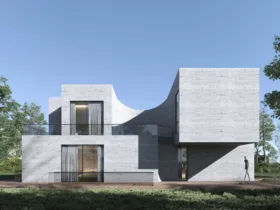
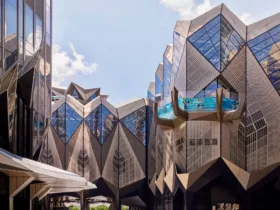
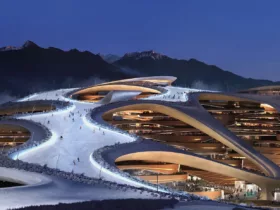
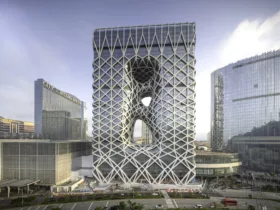
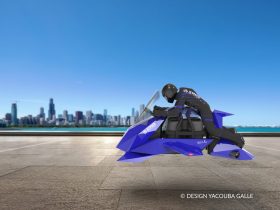
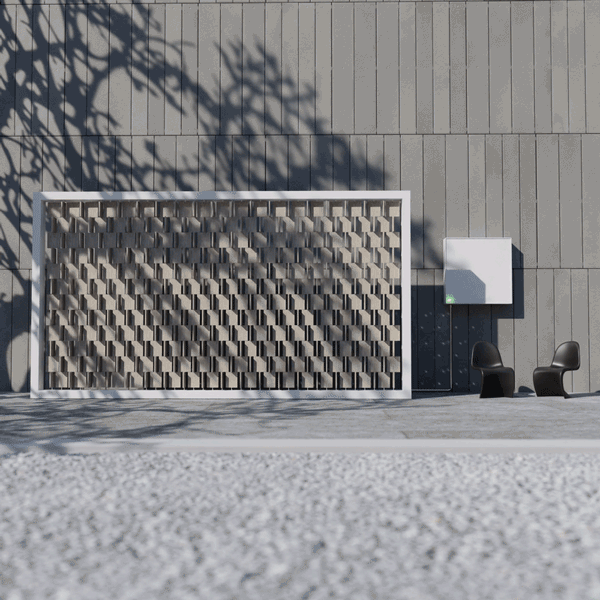
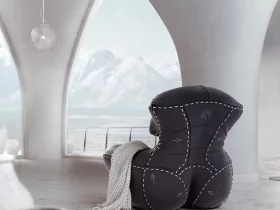
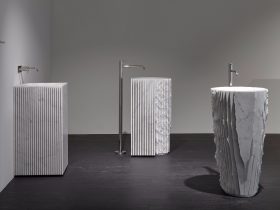
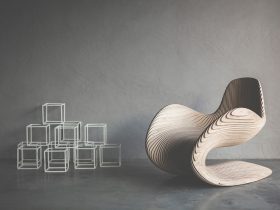




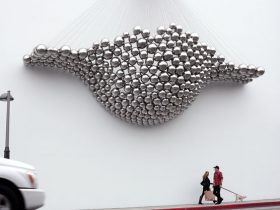

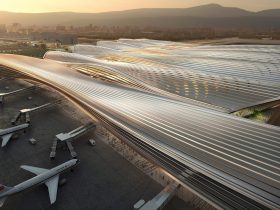
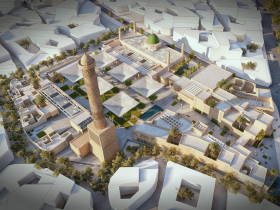
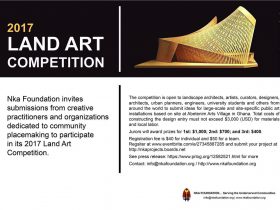
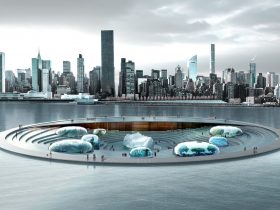


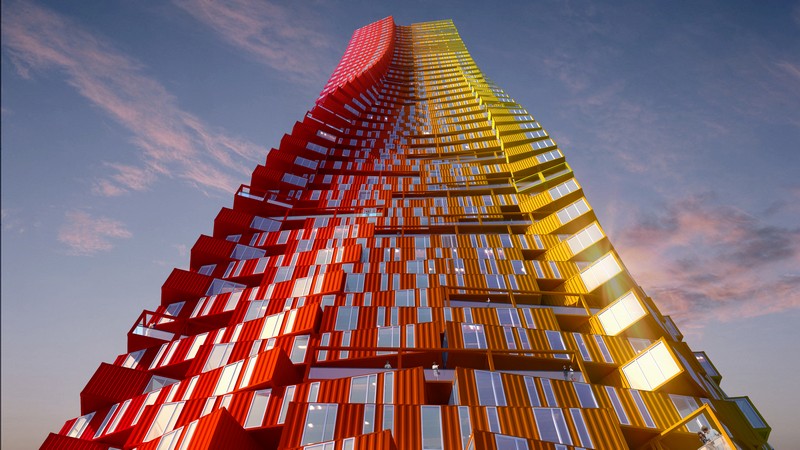
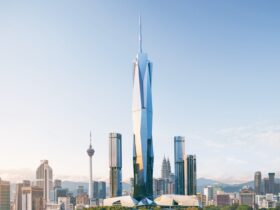


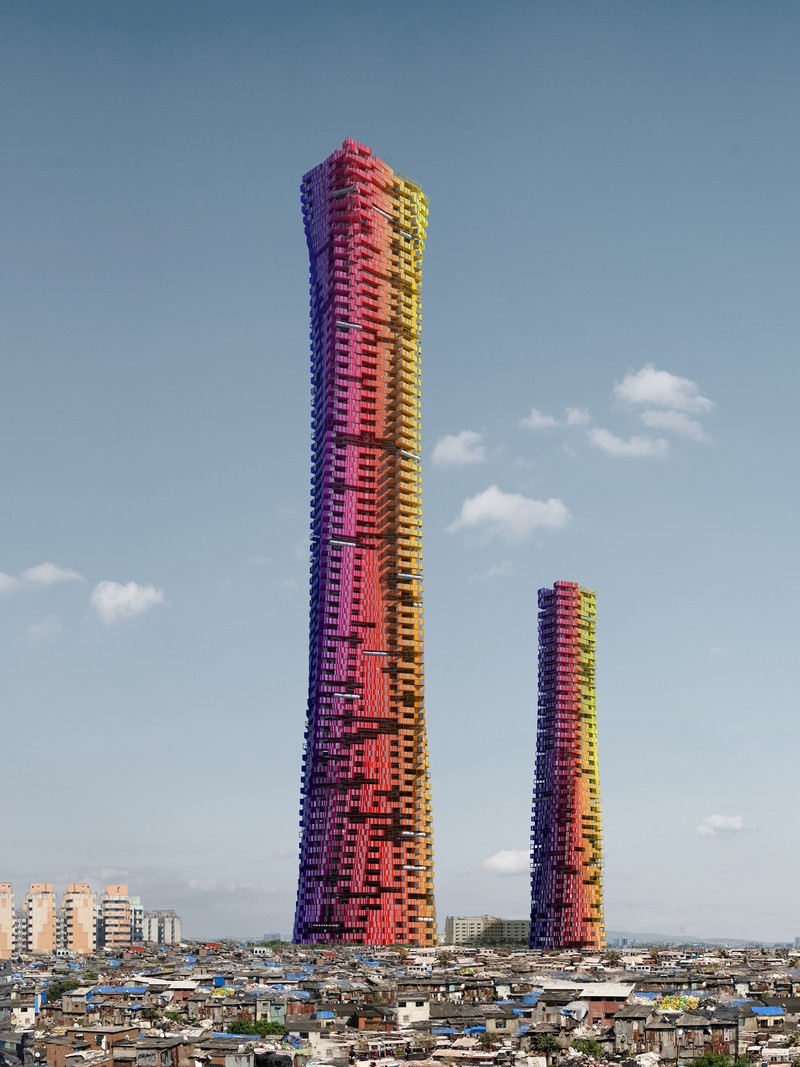

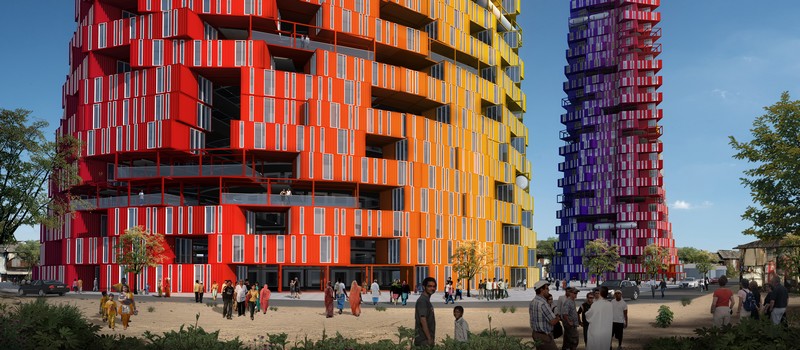
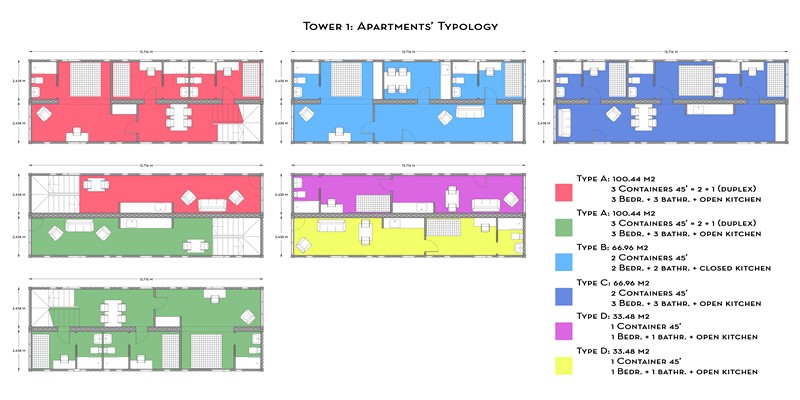
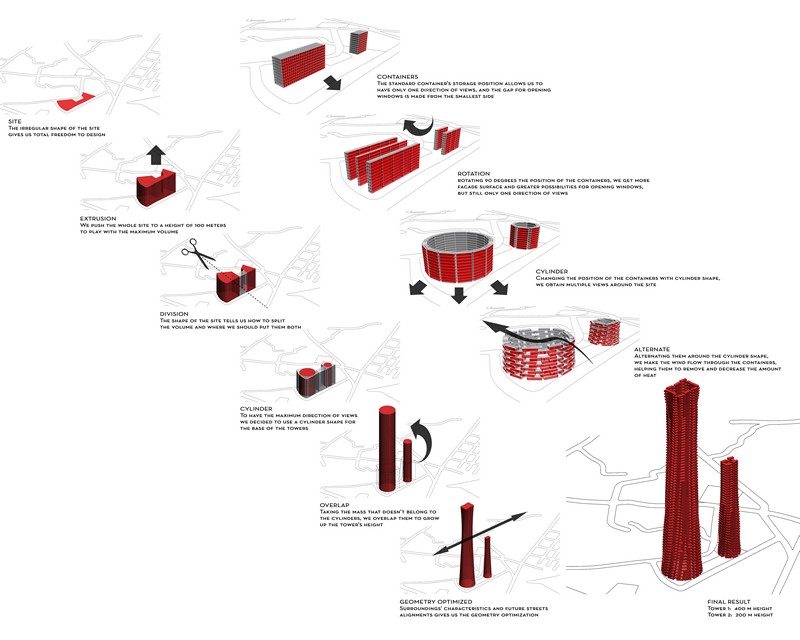
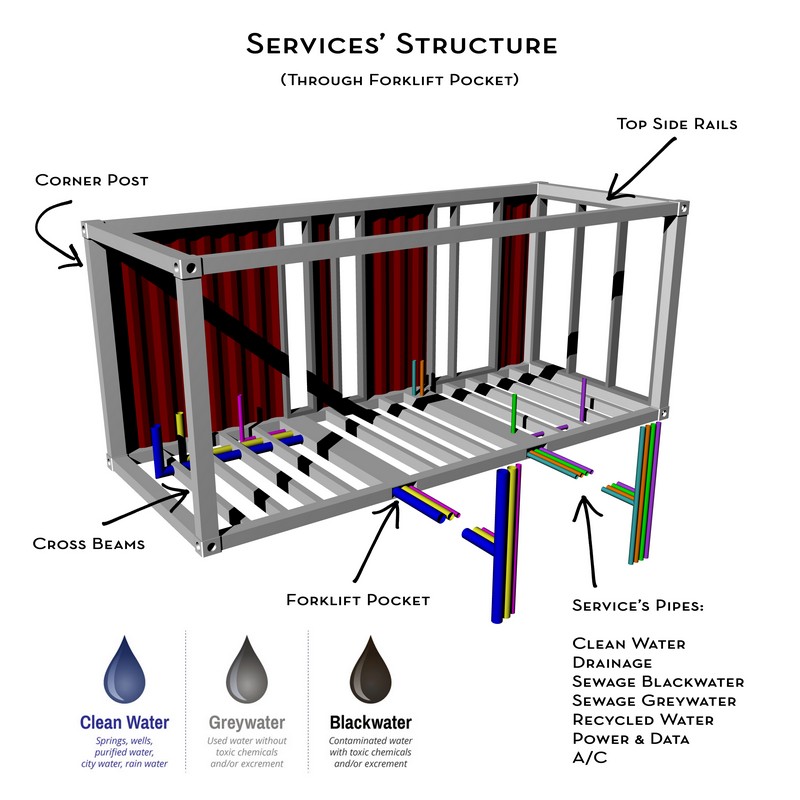
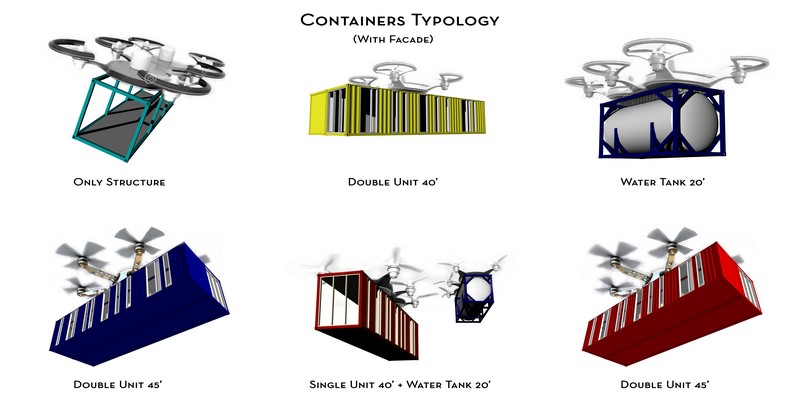
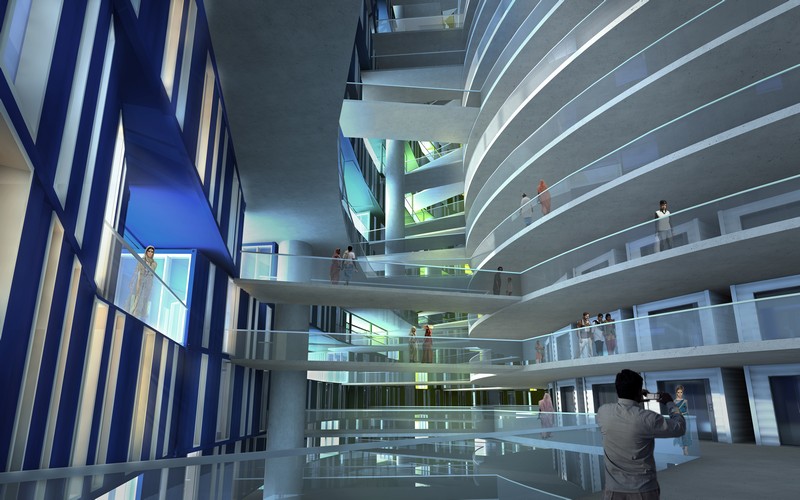
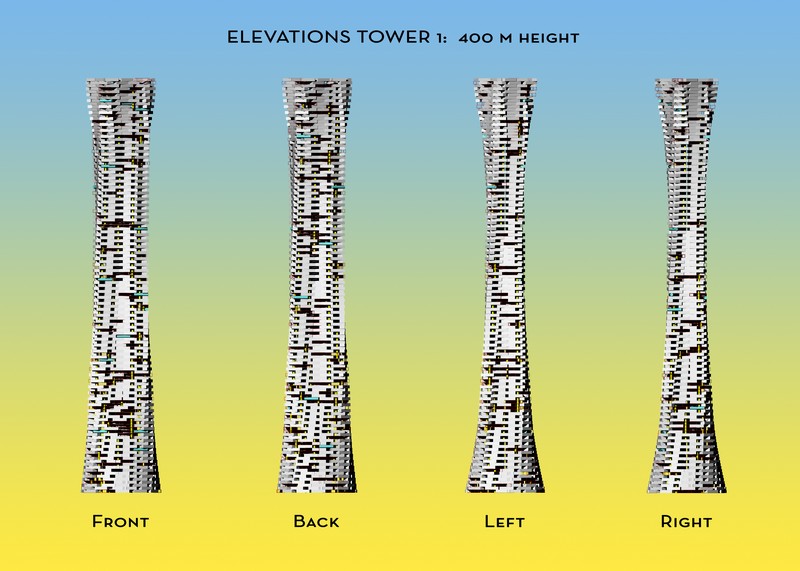
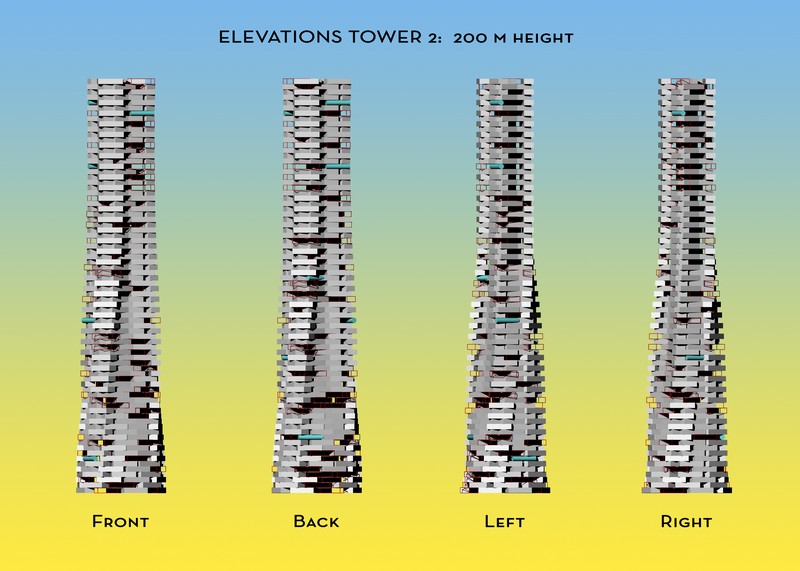
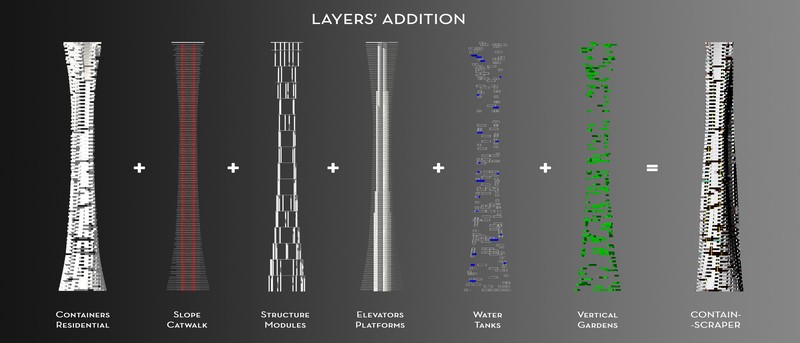
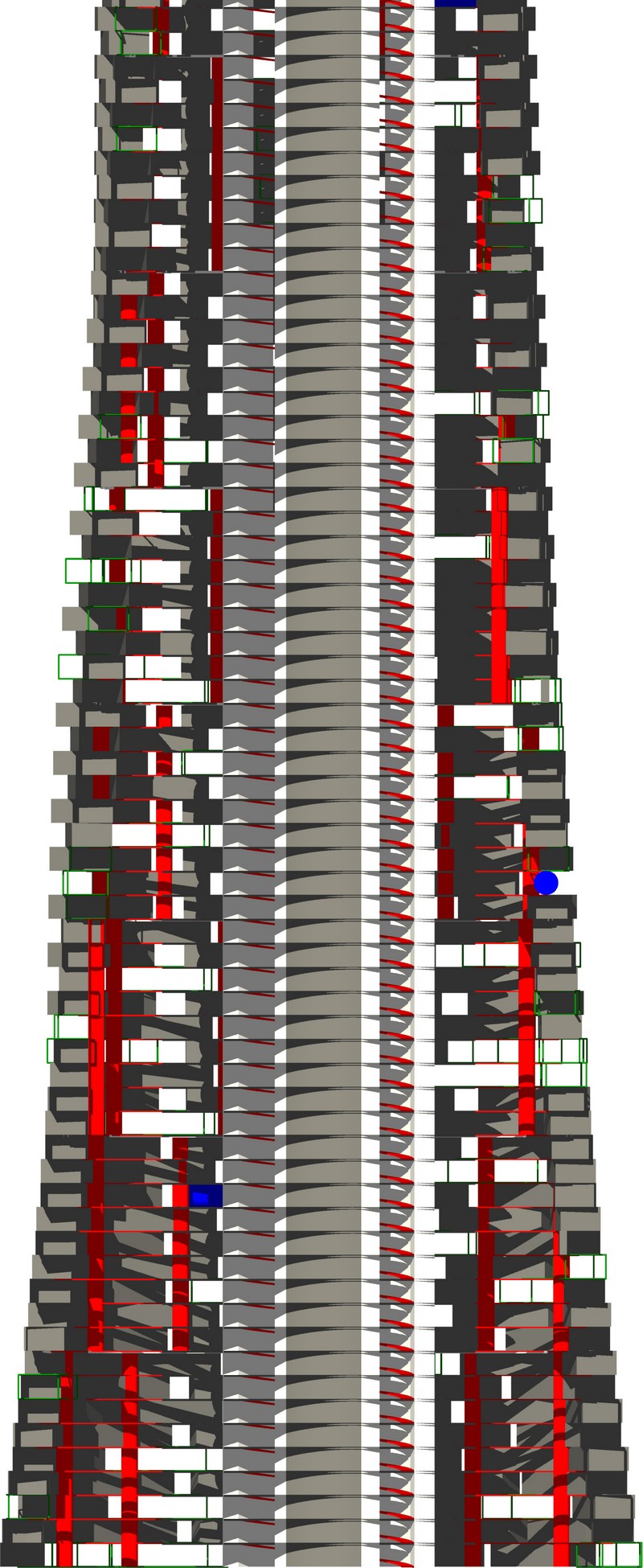
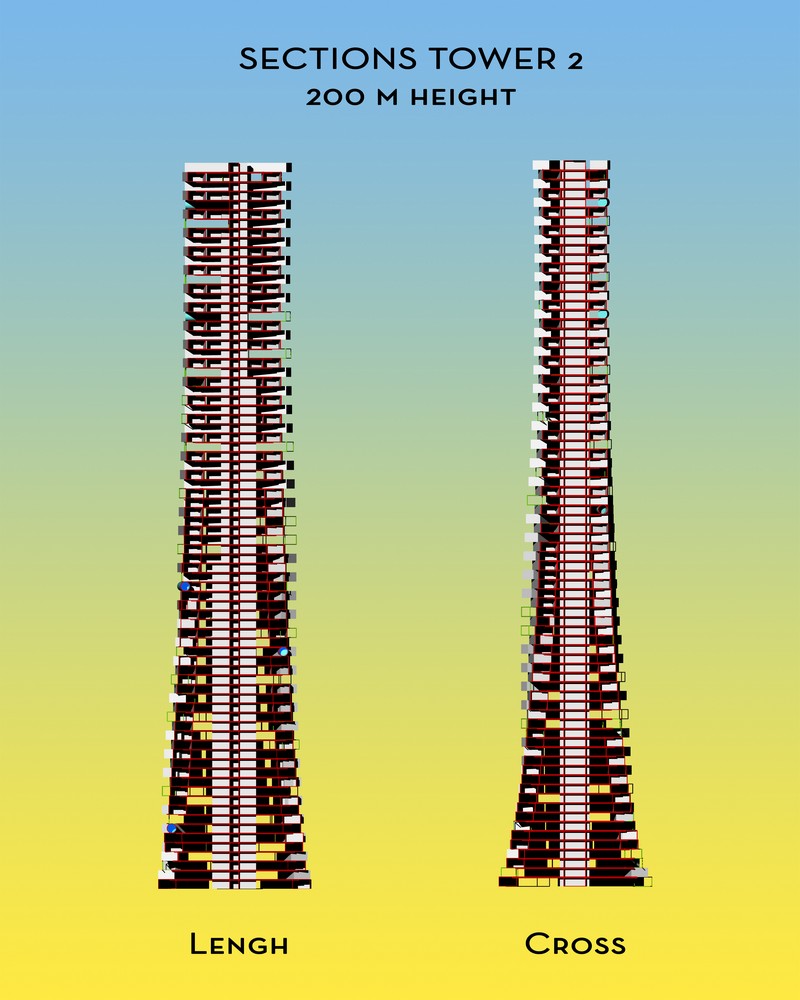
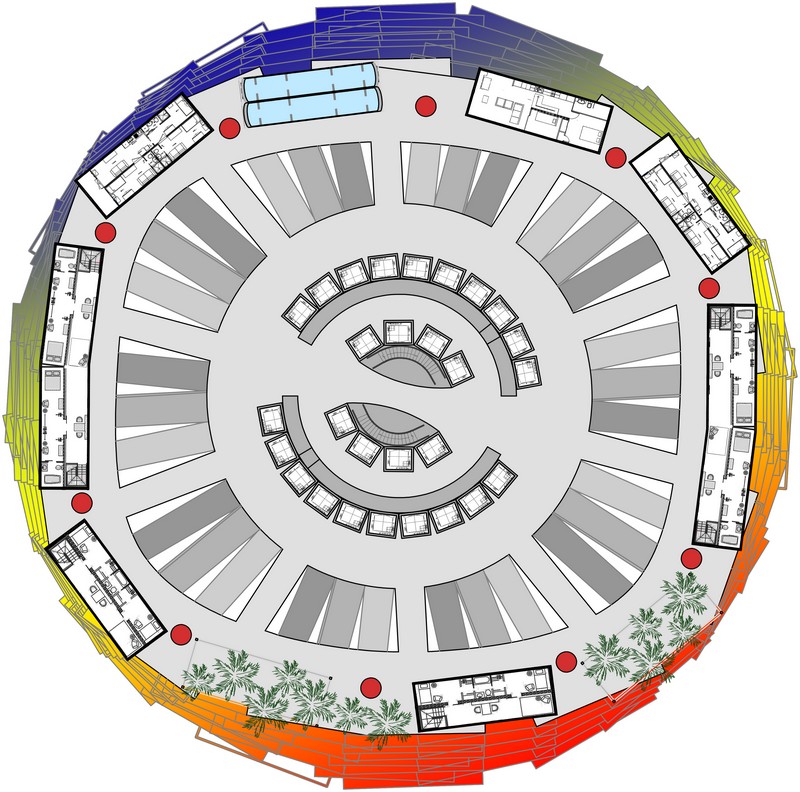
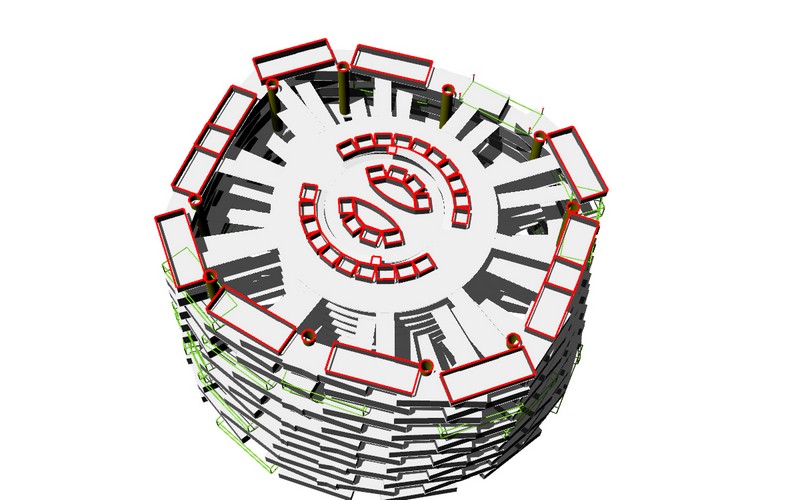
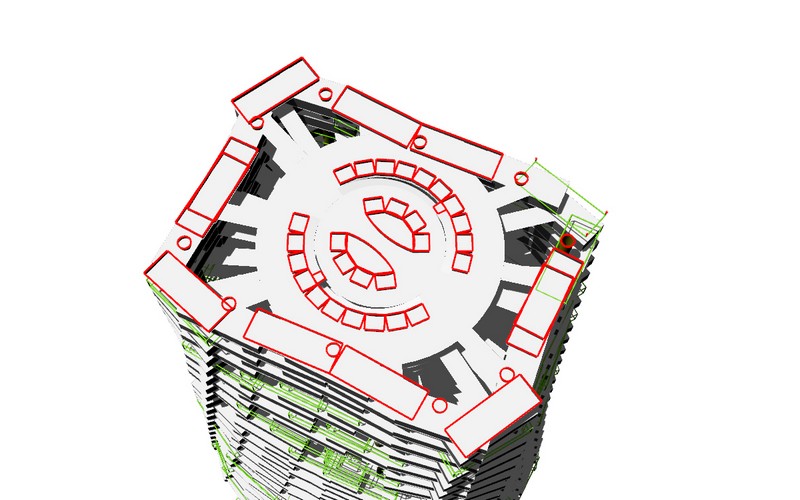
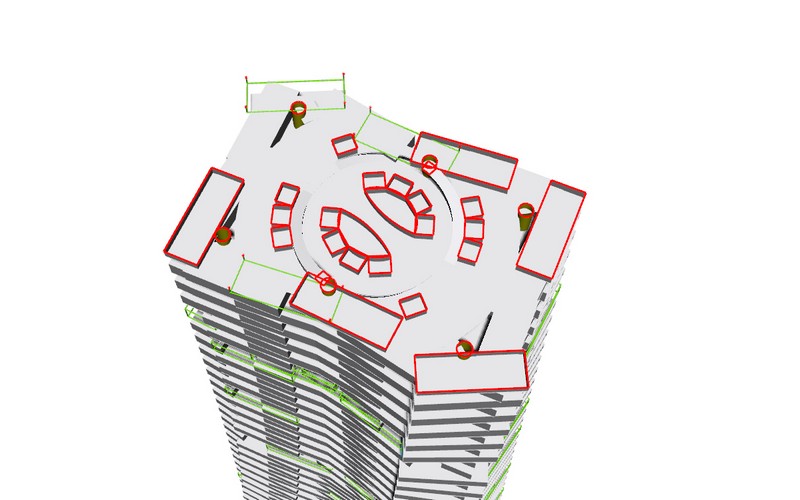
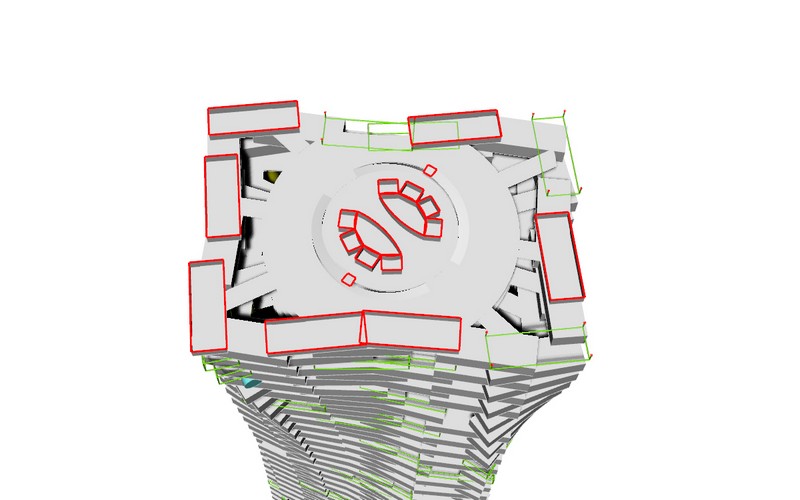
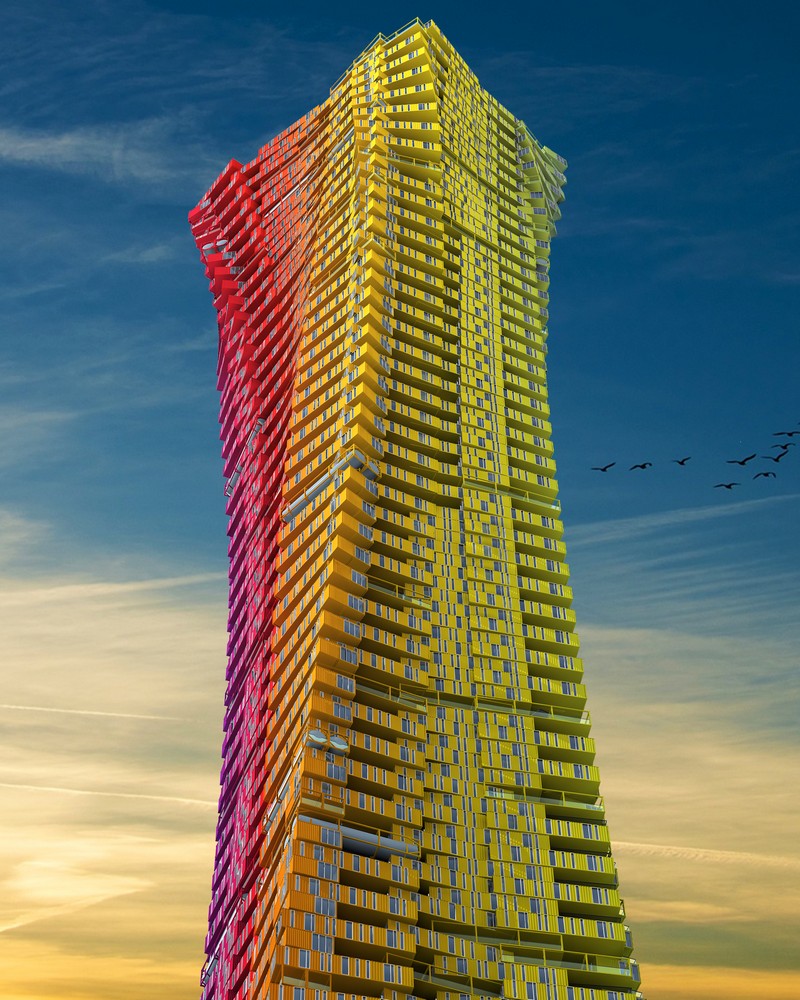
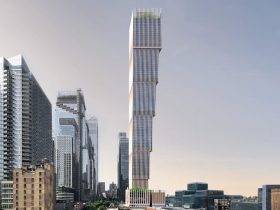
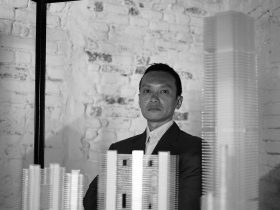
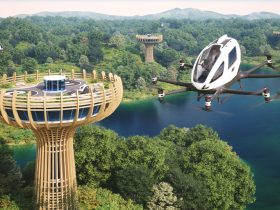
Leave a Reply